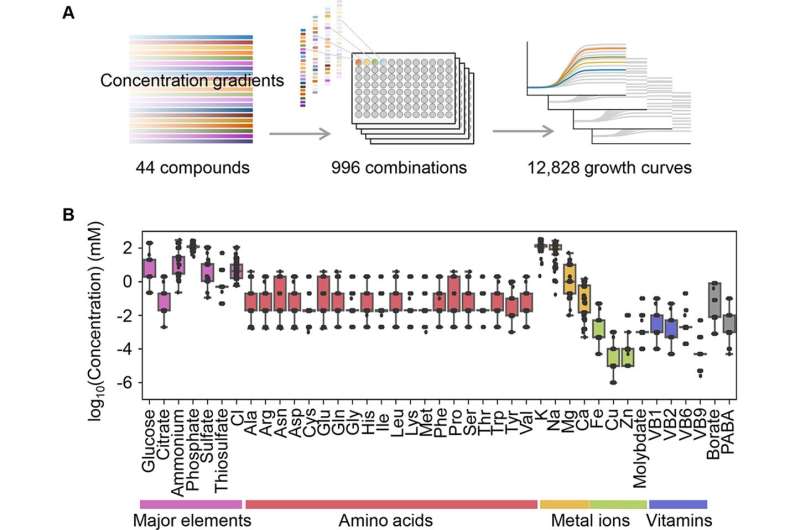Machine learning shows links between bacterial population growth and environment

Microbial populations may be small but they are surprisingly complex, making interactions with their surrounding environment difficult to study. But now, researchers from Japan have discovered that machine learning can provide the tools to do just that. In a study published this month in eLife, researchers from the University of Tsukuba have revealed that machine learning can be applied to bacterial population growth to discover how it relates to variations in their environment.
The dynamics of microbe populations are usually represented by growth curves. Typically, three parameters taken from these curves are used to evaluate how microbial populations fit with their environment: lag time, growth rate, and saturated population size (or carrying capacity). These three parameters are probably linked; trade-offs have been observed between the growth rate and either the lag time or population size within species, and with related changes in the saturated population size and growth rate among genetically diverse strains.
"Two questions remained: are these three parameters affected by environmental diversity, and if so, how?" says senior author of the study, Professor Bei-Wen Ying. "To answer these, we used data-driven approaches to investigate the growth strategy of bacteria."
The researchers built a large dataset that reflected the dynamics of Escherichia coli populations under a wide variety of environmental conditions, using almost a thousand combinations of growth media composed from 44 chemical compounds under controlled lab conditions. They then analyzed the big data for the relationships between the growth parameters and the combinations of media using machine learning (ML). ML algorithms built a model based on sample data to make predictions or decisions without being specifically programmed to do so.
The analysis revealed that for bacterial growth, the decision-making components were distinct among different growth phases, e.g., serine, sulfate, and glucose for growth delay (lag), growth rate, and maximum growth (saturation), respectively. The results of additional simulations and analyses showed that branched-chain amino acids likely act as ubiquitous coordinators for bacterial population growth conditions.
"Our results also revealed a common and simple strategy of risk diversification in conditions where the bacteria experienced excess resources or starvation, which makes sense in both an evolutionary and ecological context," says Professor Ying.
The results of this study have revealed that exploring the world of microorganisms with data-driven approaches can provide new insights that were previously unattainable via traditional biological experiments. This research shows that the ML-assisted approach, although still an emerging technology that will need to be developed in terms of its biological reliability and accessibility, could open new avenues for applications in the life sciences, especially microbiology and ecology.
More information: Honoka Aida et al, Machine learning-assisted discovery of growth decision elements by relating bacterial population dynamics to environmental diversity, eLife (2022). DOI: 10.7554/eLife.76846
Journal information: eLife
Provided by University of Tsukuba


















